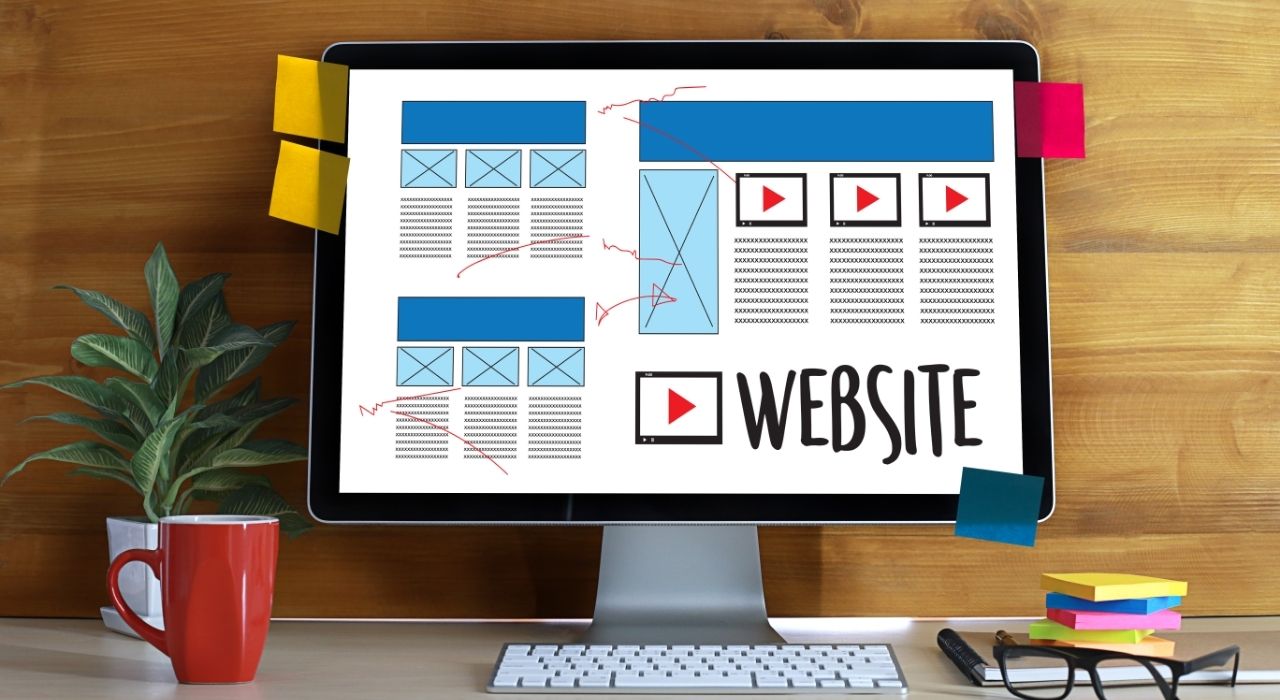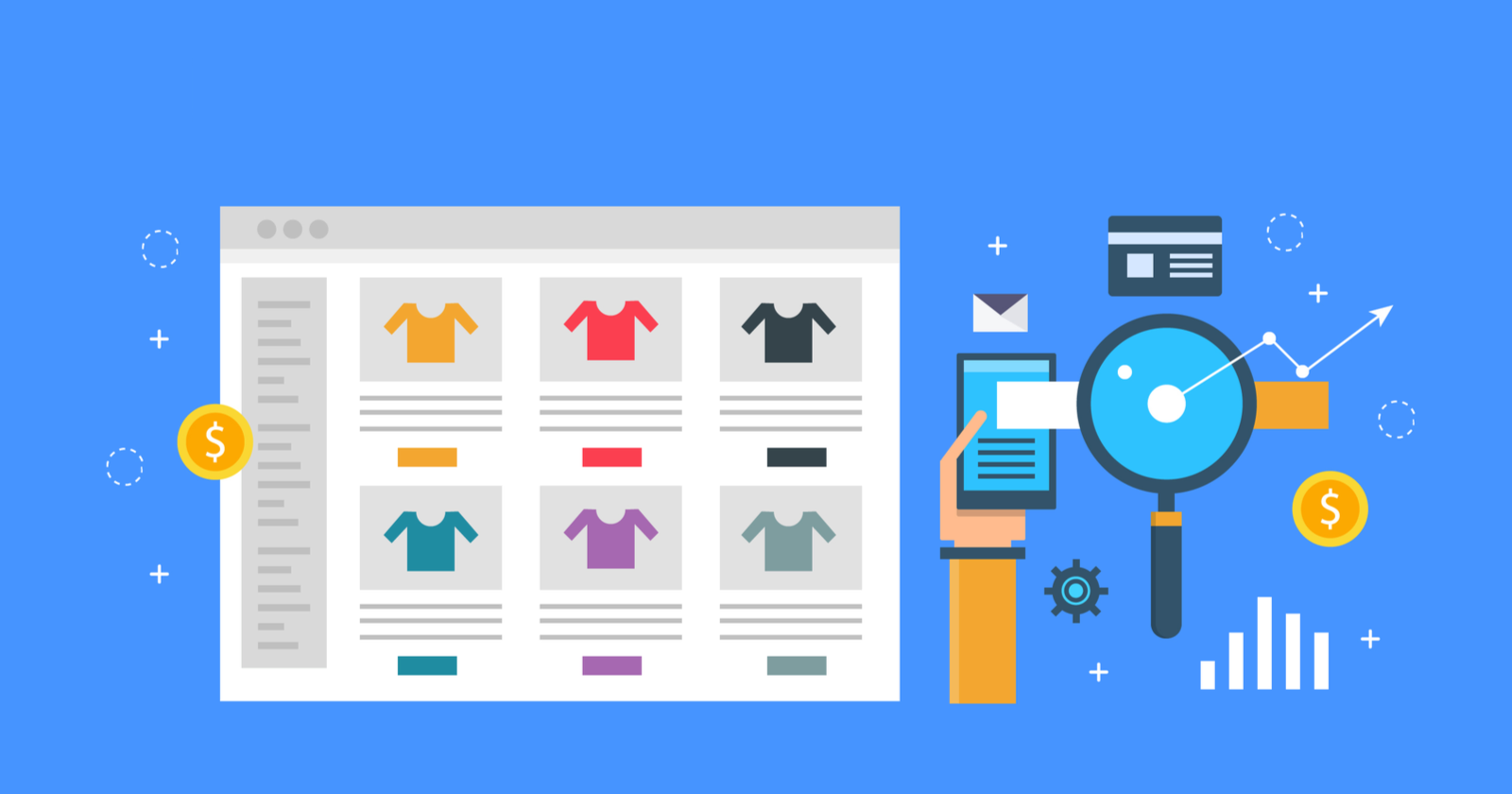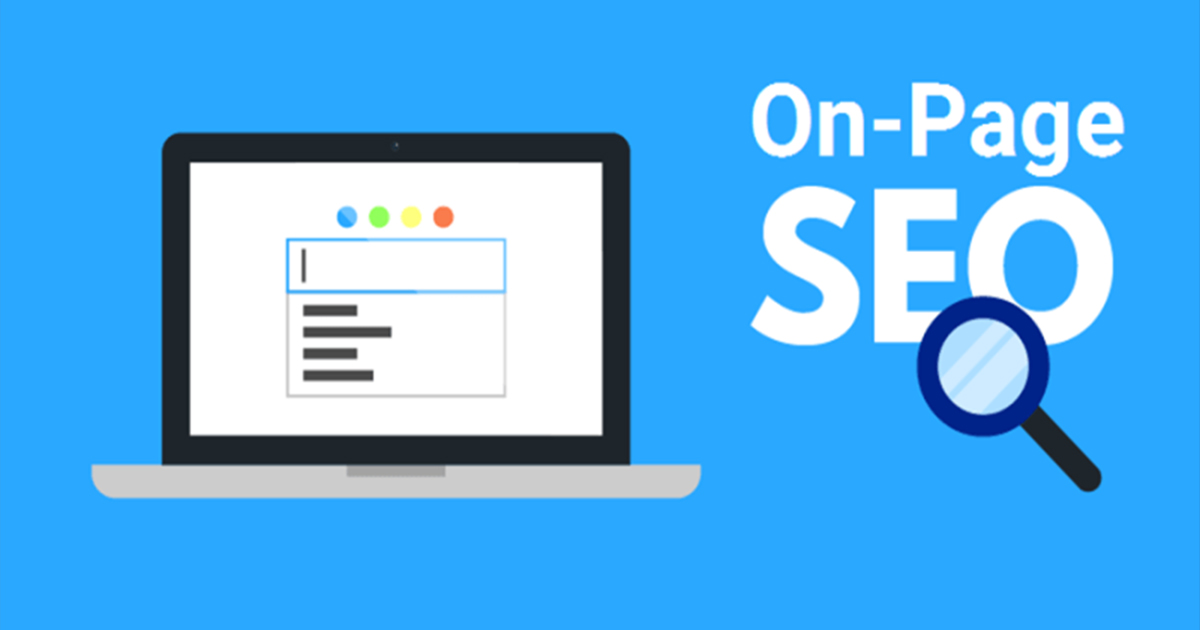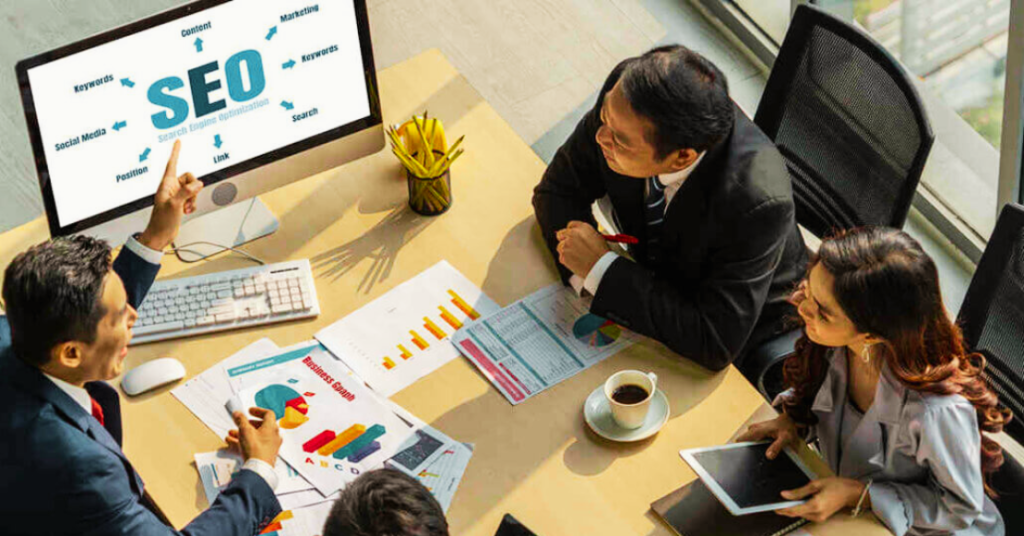Table of Contents
Introduction
In today’s digital world, On-Page SEO is one of the most essential strategies for improving website visibility and attracting relevant traffic. It refers to the process of optimizing individual web pages to rank higher in search engines while delivering a great user experience. Unlike off-page SEO, which relies on external factors such as backlinks and social signals, On-Page SEO focuses on elements that you have full control over on your website.
Implementing SEO effectively can lead to significant benefits. It improves search engine rankings, increases organic traffic, enhances user experience, and ensures that your website is fast and mobile-friendly. When every page of your website is optimized, it becomes easier for search engines to understand your content, and visitors are more likely to engage with your website, reducing bounce rates and increasing conversions.

What is On-Page SEO
Definition of On-Page SEO
On-Page SEO is the practice of optimizing the content and structure of your website pages to make them more attractive to both search engines and users. It involves careful attention to various elements such as content quality, keyword placement, headings, URLs, internal links, images, and meta tags. The goal is to ensure that search engines understand the purpose of your page and that users have a seamless experience navigating and consuming your content.
On-Page SEO vs Off-Page SEO
While On-Page SEO deals with elements within your website, off-page SEO focuses on external signals that affect your website’s authority and credibility. Off-page activities include link building, social media promotion, influencer outreach, and brand mentions. Both strategies are important, but On-Page SEO forms the foundation by making your website content clear, structured, and accessible. Without proper On-Page optimization, even the strongest off-page efforts may not achieve maximum results.
Key Components of On-Page SEO
Several key components make On-Page optimization effective:
- Title Tags and Meta Descriptions
Title tags and meta descriptions are critical for search engines and users. A well-crafted title tag includes the primary keyword and clearly describes the content of the page. Meta descriptions provide a concise summary that encourages users to click through from search engine results. - Headings and Content Structure
Using headings strategically improves readability and helps search engines understand the hierarchy of information on a page. Proper use of H1, H2, and H3 tags, along with relevant keywords, ensures that your content is structured and easy to follow. - URL Structure
Clean, descriptive URLs make it easier for both search engines and users to understand what your page is about. Including primary keywords in your URLs can improve click-through rates and rankings. - Internal Linking
Linking to other relevant pages within your website helps users navigate your site and allows search engines to crawl and index your content efficiently. It also distributes link authority across your website, enhancing the SEO value of individual pages. - Image Optimization
Optimized images improve page load speed and provide additional SEO opportunities through descriptive file names and alt text. Proper image optimization contributes to both search engine rankings and user experience.
Why On-Page SEO is Important
Improves Search Engine Rankings
On-Page SEO directly affects how search engines interpret your website content. By optimizing for relevant keywords, crafting engaging titles and meta descriptions, and structuring your content logically, you increase the chances of ranking higher for target search queries. Higher rankings mean more visibility, clicks, and potential conversions.
Enhances User Experience
A website optimized for On-Page SEO is easier for visitors to navigate and understand. Clear headings, readable content, intuitive internal linking, and fast-loading pages keep users engaged. A positive user experience reduces bounce rates, encourages repeat visits, and increases the likelihood of converting visitors into customers.
Boosts Site Speed and Mobile Performance
Search engines prioritize websites that load quickly and perform well on mobile devices. On-Page SEO includes technical optimization such as responsive design, image compression, and caching, ensuring your website meets modern usability standards. A fast, mobile-friendly website not only improves rankings but also keeps visitors satisfied.
Supports Long-Term SEO Success
On-Page SEO is the foundation of all other digital marketing efforts. It ensures that your content is discoverable, relevant, and valuable. Without solid On-Page SEO, off-page strategies like link building or social promotion may not deliver the desired results. Investing in On-Page optimization sets your website up for sustainable, long-term success.
Key On-Page SEO Factors You Must Optimize
Title Tags
Title tags are one of the most critical components of On-Page SEO. They are the first thing search engines and users see in search results, making them a key factor in determining whether someone clicks on your link. A unique and keyword-optimized title tag tells search engines what your page is about while attracting user attention. It is important to avoid duplicate titles across pages because search engines may struggle to differentiate the content, which can negatively impact rankings.
When crafting title tags, it is essential to include your primary keyword naturally, ideally near the beginning. Keeping titles concise, clear, and engaging ensures they fit within the display limit in search engine results. For example, a title tag like “On-Page SEO Guide for Beginners” clearly indicates the content topic while including the primary keyword.
Meta Descriptions
Meta descriptions provide a brief summary of your page content and appear below the title tag in search engine results. A compelling meta description can significantly improve click-through rates by enticing users to visit your website. On-Page SEO relies on meta descriptions to signal relevance to search engines, although meta descriptions are not a direct ranking factor.
To write an effective meta description, include the primary keyword naturally and focus on the benefit or value the content provides. Make it actionable and engaging, giving readers a reason to click. For example, a meta description like “Learn how to optimize your website with On-Page optimization techniques for higher rankings and better user experience” clearly communicates the purpose of the page while integrating the keyword.
Header Tags H1 H2 H3
Proper use of header tags improves both readability and SEO. Header tags structure your content by dividing it into sections, making it easier for readers to scan and understand. The H1 tag should be reserved for the main title of the page, while H2 and H3 tags organize subtopics and related points.
In On-Page SEO, using header tags strategically allows search engines to understand the hierarchy of your content. Including relevant keywords in header tags can further enhance your page’s relevance for target search queries. For instance, an H2 tag like “Content Optimization Tips for On-Page SEO” clearly signals the subtopic while supporting keyword usage.
URL Structure
SEO-friendly URLs are short, descriptive, and include the primary keyword. A clean URL not only helps search engines understand the content of your page but also improves user experience by making it easier to remember and share.
Avoid long, complex URLs with unnecessary numbers or symbols. Instead, focus on creating URLs that are concise and readable. For example, www.example.com/on-page-seo-guide is much better than www.example.com/page?id=12345. Including your primary keyword in the URL strengthens the connection between the page content and search intent, contributing to better rankings.
Content Optimization
Content is at the heart of On-Page SEO. High-quality content addresses user intent, provides value, and naturally integrates keywords. Effective content optimization involves placing primary and secondary keywords strategically in headings, paragraphs, and throughout the text without keyword stuffing.
Semantic keywords and related phrases can also improve relevance, signaling to search engines that your content covers the topic comprehensively. Additionally, using clear and concise sentences, bullet points, and engaging examples enhances readability. Optimized content not only ranks better but also keeps visitors engaged, increasing the likelihood of conversions and repeat visits.
Internal Linking
Internal linking is an essential On-Page SEO practice that improves website navigation and distributes authority across pages. By linking to other relevant content within your website, you help users discover additional resources while enabling search engines to crawl your site more effectively.
When adding internal links, use descriptive anchor text that reflects the linked page’s content. This provides context to both users and search engines. For example, linking the phrase “advanced On-Page SEO techniques” to a detailed guide on the topic strengthens the internal SEO structure and improves overall site authority.
H3 Image Optimization
Images play an important role in user experience and On-Page SEO. Optimized images enhance page load speed, improve accessibility, and provide additional opportunities for search engine ranking through descriptive alt text.
Each image should have a meaningful file name that includes relevant keywords. Alt text should describe the image accurately while naturally incorporating the primary or secondary keywords where appropriate. Additionally, compressing images reduces file size, ensuring that pages load quickly and efficiently, which is a crucial factor for SEO performance and mobile friendliness.
Mobile Friendliness and Page Speed
Mobile friendliness and fast page speed are vital technical factors for On-Page SEO. With the majority of users accessing websites via mobile devices, search engines prioritize responsive websites that provide a seamless experience across all screen sizes.
Optimizing for mobile includes ensuring proper text size, spacing, button accessibility, and avoiding intrusive popups. Page speed can be improved by compressing images, enabling browser caching, and minimizing unnecessary scripts. A website that loads quickly not only improves search engine rankings but also enhances user satisfaction and reduces bounce rates, making it more likely that visitors will stay and engage with your content.
Technical Elements Supporting On-Page SEO
Beyond content and design, technical elements such as structured data, canonical tags, and XML sitemaps play a critical role in On-Page optimization. Structured data helps search engines understand your content better, potentially leading to rich snippets in search results. Canonical tags prevent duplicate content issues, ensuring that search engines index the correct version of a page. XML sitemaps improve crawlability, making it easier for search engines to discover and index all pages of your website efficiently.
User Experience and Engagement
On-Page SEO is not just about optimizing for search engines; it is also about improving the experience of your visitors. Clear navigation, intuitive design, and engaging content keep users on your website longer and encourage interactions. Elements such as call-to-action buttons, interactive content, and multimedia integration all contribute to better user engagement, which can indirectly influence search rankings by signaling value to search engines.
Continuous Monitoring and Updates
Effective On-Page SEO is an ongoing process. Regularly monitoring key performance indicators such as rankings, traffic, bounce rates, and page speed ensures that your website stays optimized. Updates may include refreshing content, optimizing new images, improving internal links, and adapting to search engine algorithm changes. By consistently refining your On-Page SEO strategy, you maintain strong search visibility and provide an excellent experience for both users and search engines.
On-Page SEO Checklist

Having a comprehensive checklist for On-Page SEO ensures that every element of your website is fully optimized for search engines and users. Following a structured approach helps maintain consistency and improves the likelihood of achieving higher rankings.
Include Target Keyword in Title and H1
The foundation of On-Page SEO begins with placing the target keyword in both the title tag and the H1 heading. Search engines use these elements to understand the main topic of your page, and users also see them first when scanning search results. Ensure that the title is concise, engaging, and naturally includes the primary keyword, while the H1 heading should accurately reflect the page content and provide a clear introduction to the topic.
Optimize Meta Description
Meta descriptions are essential for attracting clicks from search engine results. A well-crafted meta description includes the primary keyword naturally and communicates the value of the page to users. It should be concise, persuasive, and focused on what readers will gain from visiting the page. Using action-oriented language encourages users to click, which can indirectly improve your On-Page SEO performance by increasing engagement metrics.
Use Header Tags Properly
Proper use of header tags organizes content into logical sections, enhancing readability and SEO. H2 and H3 tags help search engines understand the hierarchy of your content and identify key topics. Including relevant keywords in headers supports your optimization efforts and makes your content more scannable for users. This structure improves user experience and signals content relevance to search engines.
Include Internal and External Links
Internal linking connects related pages within your website, helping distribute authority and guiding users to additional resources. Descriptive anchor text improves SEO value and usability. External links to high-authority sources enhance credibility and provide additional context, showing search engines that your content is well-researched and trustworthy. A balanced approach to linking strengthens both the authority and usability of your website.
Optimize Images with Alt Text
Images contribute to user engagement and page aesthetics, but they also play a role in On-Page SEO. Using descriptive alt text allows search engines to understand the content of images while improving accessibility. File names should be descriptive and include relevant keywords where appropriate. Compressing images ensures faster page loading, which is critical for SEO performance and mobile usability.
Ensure Mobile Responsiveness
With most users accessing websites through mobile devices, mobile responsiveness is crucial for On-Page optimization. Pages should adjust seamlessly to different screen sizes, with readable text, appropriately sized buttons, and intuitive navigation. A mobile-friendly site improves user experience, reduces bounce rates, and is favored by search engines in rankings.
Improve Page Speed
Page speed is a critical technical factor in On-Page SEO. Slow-loading pages frustrate users and can lead to higher bounce rates. Optimizing images, leveraging browser caching, and minimizing unnecessary scripts all contribute to faster loading times. Regular speed testing ensures that your website performs efficiently, keeping visitors engaged and improving search engine rankings.
Use Schema Markup
Schema markup provides search engines with structured information about your content, improving how your pages appear in search results. Adding schema can lead to rich snippets, which increase visibility and click-through rates. This On-Page SEO technique allows search engines to understand content types, such as articles, products, or reviews, enhancing the relevance and attractiveness of your listings.

Advanced On-Page Optimization Techniques
To take your On-Page SEO efforts to the next level, advanced techniques go beyond basic optimization. These strategies help you stand out in search rankings while providing better experiences for your users.
Latent Semantic Indexing Keywords
Latent Semantic Indexing or LSI keywords are terms and phrases that are semantically related to your primary keyword. Including LSI keywords throughout your content improves relevance and helps search engines understand the context of your page. For example, if your primary keyword is On-Page SEO, related terms like SEO checklist, meta tags optimization, content optimization, and SEO factors act as LSI keywords. Properly using LSI keywords avoids keyword stuffing while boosting your chances of ranking for multiple search queries.
Optimizing for User Intent
Modern search engines prioritize content that matches user intent. Understanding whether a user is looking for information, a product, or a service helps you create content that satisfies their needs. On-Page SEO optimization should focus on answering questions, solving problems, or providing valuable resources. Including relevant examples, case studies, or actionable steps increases engagement and encourages visitors to spend more time on your site.
Schema Markup and Rich Snippets
Schema markup enhances how your content appears in search results by providing structured data. Implementing schema can generate rich snippets such as reviews, ratings, FAQs, and event information. Rich snippets improve click-through rates and provide search engines with a better understanding of your page content. This advanced On-Page SEO technique can give your website a competitive edge by making your listings more appealing and informative.
Updating Content for Freshness
Search engines favor fresh and regularly updated content. Revisiting your pages to update statistics, add new examples, or refine keyword placement keeps your content relevant. Maintaining updated content shows search engines that your website is active and authoritative, which can improve rankings over time. Additionally, refreshing content keeps readers engaged and ensures that your information remains accurate and useful.
Tools to Check and Improve On-Page SEO
Using the right tools can simplify On-Page optimization, provide actionable insights, and save time during audits.
Yoast SEO WordPress
Yoast SEO is a popular plugin for WordPress websites that helps optimize titles, meta descriptions, headings, and content structure. It also analyzes keyword usage and readability, providing step-by-step guidance for improving On-Page SEO. Yoast is beginner-friendly and widely trusted by content creators and marketers.
Ahrefs On-Page SEO Analyzer
Ahrefs offers a powerful On-Page SEO analyzer that evaluates content for keyword usage, internal linking, page performance, and other critical factors. It provides actionable recommendations to optimize your pages for better rankings and helps identify opportunities for improvement across your website.
Moz On-Page Grader
Moz provides an On-Page SEO grader that audits your website and scores each page based on various SEO factors. It analyzes title tags, meta descriptions, content relevance, header usage, and more. Moz helps you pinpoint areas that need attention and ensures that your On-Page SEO efforts are effective.
SEMrush On-Page SEO Checker
SEMrush On-Page SEO Checker evaluates your pages against competitor performance and provides recommendations for improving content, keywords, and technical factors. The tool helps you implement best practices and track progress, making it an excellent resource for advanced On-Page SEO strategies.
Screaming Frog SEO Spider
Screaming Frog SEO Spider crawls your website to analyze On-Page SEO factors such as broken links, duplicate content, missing meta tags, and page speed issues. It is especially useful for technical audits and ensuring that all pages comply with On-Page SEO best practices.
On-Page SEO for Ecommerce and WordPress Websites

Optimizing On-Page SEO for ecommerce and WordPress websites requires specialized strategies to boost product visibility, category relevance, and blog engagement.
Tips for Product Pages Category Pages and Blogs
For ecommerce websites, product pages should have unique titles, meta descriptions, and rich content that highlights features and benefits. Category pages should be structured logically with keyword-optimized headings and descriptions to improve navigation and search relevance. Blogs support On-Page SEO by targeting informational keywords, improving internal linking, and attracting organic traffic. Each page type requires a tailored approach to maximize SEO effectiveness.
Structured Data for Ecommerce Products
Structured data plays a crucial role in ecommerce SEO by providing search engines with detailed information about products such as price, availability, reviews, and ratings. Implementing structured data improves visibility in search results through rich snippets and enhances the user experience by making product information clear and accessible.
WordPress Specific Optimization
WordPress websites benefit from plugins and tools that simplify On-Page SEO. Using SEO-friendly themes, optimizing images, ensuring mobile responsiveness, and managing internal linking are key steps. Plugins like Yoast SEO or Rank Math provide real-time optimization suggestions, making it easier to implement On-Page SEO best practices without technical expertise.
Ongoing Maintenance and Updates
On-Page SEO is not a one-time task. For ecommerce and WordPress websites, continuous monitoring of page performance, content freshness, and technical factors ensures sustained rankings and improved user experience. Regular updates, audits, and optimization of product listings, blog posts, and landing pages help maintain competitiveness in search results.
Common On-Page SEO Mistakes to Avoid
Even with the best intentions, many websites fail to fully leverage On-Page SEO due to common mistakes. Avoiding these pitfalls can save time, improve rankings, and enhance user experience.
Keyword Stuffing
Keyword stuffing occurs when a keyword is used excessively in content, titles, or meta descriptions. Search engines now prioritize natural, valuable content over repetitive keyword usage. Overloading your page with keywords can result in penalties and a poor user experience. Instead, focus on strategic keyword placement, LSI keywords, and user intent to create content that reads naturally while remaining SEO-friendly.
Duplicate Content
Duplicate content refers to having the same or very similar content on multiple pages. This can confuse search engines and split ranking signals, making it difficult for your pages to rank. Ensure that each page has unique content, meta descriptions, and headings. Use canonical tags when necessary to indicate the preferred version of a page. Regularly auditing your website helps identify and resolve duplicate content issues.
Missing Alt Text
Images are an essential part of web content, but failing to add descriptive alt text can hurt both accessibility and SEO. Alt text helps search engines understand the content of images and can contribute to rankings in image search results. Additionally, it improves the experience for visually impaired users using screen readers. Always include clear, descriptive alt text for every image on your site.
Ignoring Mobile Optimization
With the majority of web traffic coming from mobile devices, ignoring mobile optimization can significantly impact rankings and user experience. Ensure your website is responsive, loads quickly, and displays correctly on all screen sizes. Mobile-friendly design is a critical component of On-Page SEO and influences search engine rankings directly.
Slow Page Speed
Page speed is both a ranking factor and a user experience issue. Slow-loading pages can lead to high bounce rates and reduced engagement. Optimize images, leverage caching, minimize unnecessary scripts, and use reliable hosting to improve page speed. Regular performance testing ensures that your pages remain fast and user-friendly.
FAQs on On-Page SEO
What is On-Page SEO
On-Page SEO refers to the practice of optimizing individual web pages to rank higher in search engines and attract relevant traffic. It includes optimizing content, HTML elements like title tags and meta descriptions, images, URL structure, and technical aspects such as page speed and mobile responsiveness. On-Page SEO is crucial for helping search engines understand your content and improving user experience.
How do I check On-Page SEO of my website
You can check On-Page SEO using various tools and manual audits. Tools like Yoast SEO, Ahrefs On-Page SEO Analyzer, SEMrush On-Page SEO Checker, and Moz On-Page Grader can assess keyword usage, content quality, meta descriptions, heading structure, internal linking, and technical factors. A regular audit ensures that your pages meet SEO best practices and remain competitive.
What are the most important On-Page SEO factors
Key On-Page SEO factors include title tags, meta descriptions, header tags, URL structure, content optimization, internal linking, image optimization, mobile friendliness, and page speed. Additionally, advanced techniques like schema markup, LSI keywords, and optimizing for user intent can further enhance rankings and user engagement.
Is On-Page SEO more important than Off-Page SEO
Both On-Page SEO and Off-Page SEO are critical for a comprehensive SEO strategy. On-Page SEO focuses on factors within your control on your website, while Off-Page SEO deals with external signals such as backlinks and social signals. Optimizing On-Page SEO ensures your content is accessible, relevant, and structured correctly, which enhances the effectiveness of Off-Page SEO efforts.
How often should I update On-Page SEO
On-Page SEO is an ongoing process. Regularly updating content, optimizing new pages, and performing SEO audits every few months ensures your website remains competitive. Fresh content, updated statistics, and refined keyword placement help maintain relevance with search engines and improve user experience over time.
Which tools are best for On-Page SEO analysis
Some of the best tools for On-Page SEO analysis include Yoast SEO for WordPress optimization, Ahrefs On-Page SEO Analyzer for detailed audits, SEMrush On-Page SEO Checker for recommendations, Moz On-Page Grader for scoring and insights, and Screaming Frog SEO Spider for technical audits. Using these tools regularly can guide you in optimizing each page effectively.
Can On-Page SEO improve my site speed
Yes, On-Page SEO includes technical optimizations that improve page speed. Optimizing images, minimizing scripts, leveraging caching, improving server response time, and using mobile-friendly design all contribute to faster load times. Better page speed enhances user experience, reduces bounce rates, and positively impacts search engine rankings.

Final Thoughts on On-Page SEO
Implementing On-Page SEO correctly is essential for achieving high rankings, attracting targeted traffic, and providing a seamless user experience. By following checklists, avoiding common mistakes, and using reliable tools, website owners can ensure that every page is optimized effectively. Regular audits, continuous improvements, and attention to both content and technical factors will keep your website competitive and search-engine-friendly. Auditing your website today can uncover opportunities for optimization and help drive sustainable growth.




